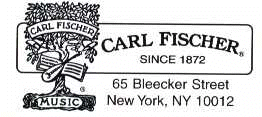|
Home
TITLES
AudioVideo
AuthorJTR
JTRStory
Teachers
Articles
Reviews
Links
|
 |
Suzuki Parents Can Help Their Children
Learn To Read Music At Home!*
copyright 2002 by Janice Tucker Rhoda
There are many teachers using the suzuki method books in their studios. Being concerned with helping my own students learn to read well I strive to make it as easy as possible! Frequently asked questions include: How can a suzuki parent help his or her child develop good reading skills at home? When is the appropriate time for a child to make the transition from rote learning to note reading?
Six years ago, I published the first book of my reading method series, The ABCs of Strings, for violin, viola, cello and bass which is now published by Carl Fischer Music of New York. Since combining my own ideas with concepts of the suzuki materials and taking care to complement the suzuki materials completely, hundreds of suzuki teachers, parents and students in the US and abroad have taken notice and now enjoy using these books. However, please note: all ABCs of Strings method books include more key signatures, time signatures, and rhythms, plus additional bowings and left-hand fingering techniques not found in the suzuki books.
When a child begins studying using the suzuki approach, he or she will attend private as well as group lessons, and will listen to the CD of violin book 1. At the teacher's discretion, reading materials will be introduced when the time seems appropriate for that particular student. As a general rule, a child will have stable intonation (playing in tune) and posture before a suzuki teacher attempts to teach reading skills. Traditional violin teachers tend to introduce music reading earlier in the development than suzuki teachers.
Some suzuki teachers prefer to wait until the end of Suzuki book 1 before introducing note reading while others wait until Perpetual Motion is learned thoroughly. Yet others wait until the student has learned book 2 or even book 3 thoroughly. The older the student, the earlier the introduction can be. There are exceptions; I've had many students who at ages 4, 5 and 6 grasp reading skills right away. If parents are willing to help them in practice sessions at home, I will educate both students and parents at their private lessons and guide them through their quest to learn to read musical notation.
There is a simple way of looking at the letter names and fingerings. Think of the alphabet! We start with the A-string, the 2nd string in, which Twinkle, Twinkle Little Star begins on. The first note is "Open-A." After "A" comes 1st finger "B" and after 1st finger "B" is 2nd finger "C#." After 2nd finger "C#" is 3rd finger "D" and after 3rd finger "D" is 4th finger "E." 4th finger "E" matches "Open-E." We continue going up the alphabet on the E-String.
Simply put:
A = Open-A (no fingers down)
A1 = B
A2 = C#*
A3 = D
E = Open-E (no fingers down)
E1 = F#
E2 = G#
E3 = A (High A)
E4 = B
*Say "C-Sharp."
Over the years, I've had students sing the letter names (A, B, C#, D, E, F#, G#, A) or sing solfège syllables. There are the Kodály or Moveable Do solfège syllables: do, re, mi, fa, sol, la, ti, do. In this system "Do" is A. "Re" is B. "Mi" is C#. "Fa" is D. "Sol" is E. "La" is F#. "Ti" is G# and "Do" is A.
If a student is from a country familiar with the French solfege system, I use these solfège syllables: la, si, do, re, mi, fa, sol, la, si, do. In the French system "La" is A. "Si" is B. "Do" is C. "Re" is D. "Mi" is E. "Fa" is F. "Sol" is G and "La" is A. As a teacher of students from all over the world, I have learned to use both systems of solfège. As a young child I studied Moveable Do, and at New England Conservatory I studied both the Kodály and French solfège systems.
My students "clap the counting." For example, in the first line of Twinkle, students clap their hands while counting aloud along with the melody. There are 4 beats per measure and each quarter note receives 1 beat.
Say and clap on each beat:
1, 2, 3, 4
1, 2, 3--4
1, 2, 3, 4
1, 2, 3--4
3--4 denotes a half note which receives 2 beats.
Here is a partial list of pieces in violin book 1, The ABCs of Violin for the Absolute Beginner: Mary Had A Little Lamb, Jingle Bells, My Dreydl, Beethoven's Ode To Joy and Violin Concerto Theme, London Bridge, Alouette, and fiddle tunes. There are 34 selections in all. Students can play along with the matching CD, The ABCs of Violin for the Absolute Beginner Performance and Play-Along CD. On this CD there is a violin performance section of the pieces with piano accompaniment, a play-along section with piano tracks only and a printable pdf file of the piano accompaniments.
Basic graphs appear in all of the books, showing exactly where to place the fingers on the neck of the violin. The notes are larger than those in the suzuki books for ease of reading purposes.
Enjoy teaching your children reading skills. It will be noticeably worth it when you see them playing in school orchestra at their first holiday concert!
Janice Tucker Rhoda
Author of The ABCs of Strings & Complete Technique
Published by Carl Fischer Music
Books, DVDs, CDs
Contact Janice: abcsofstrings@gmail.com
*This article by Janice Tucker Rhoda appeared in Suzuki Parent Newsletter's February 2002 issue. |
 |
 |
|
|

|
|